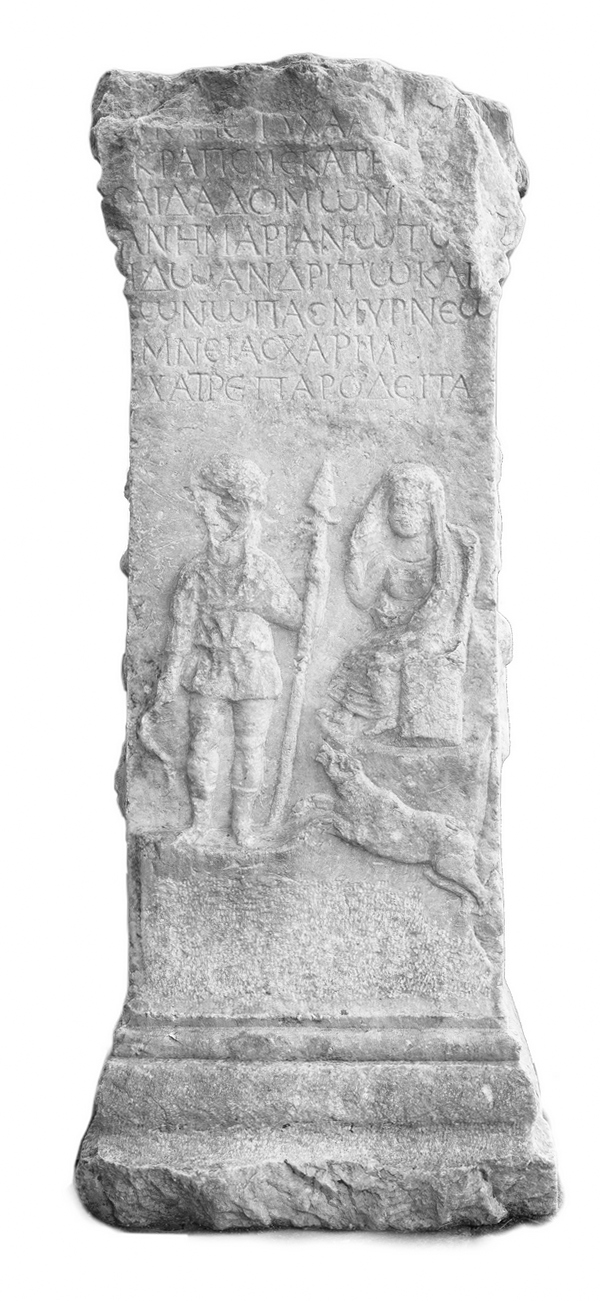In 1915 the Ephor of Antiquities G. Oikonomos published a grave altar he saw in the garden of a private house in Karitsa, apparently coming from the northern cemetery of Dion.
The altar, dated back to the second half of the 2nd c. or the beginning of the 3rd c. A.D., is interesting because, in addition to the inscription on the front, it also has relief representations on the front and the lateral sides.

The inscription mentions that Mariane erected the grave monument for her husband Marianos Konopas, originated from Smyrna, “for the sake of his memory“. The inscription ends with a greeting addressed by the dead Marianos to the passers-by.
On the front side of the altar, below the inscription, there is a relief representation of a man standing on the left and a woman who seats on the right with the himation over her head as a sign of mourning. Below her a dog moves towards the man. On the right side of the altar two lionesses and on the left side a lioness and a bull also move towards the man on the front.
The representations reveal the status of the husband. The clothing, short tunic and high footwear, the fighting equipment, a spear on the left and a whip on the right hand, as well as the animals on the lateral sides show his occupation. Marianos was a bestiarius (beast fighter), that is, he participated in wild animal fights. Animal hunting games (ludi venationes) was a popular form of entertainment in the theaters and amphitheaters of the Roman territory. Marianos owed the nickname Konopas[1] to the sting inflicted to the animals by his weapon that resembled the mosquito bite.
[1] In ancient Greek the word κώνωψ (pronounced konops) means mosquito.
Bibliography: P. Papageorgiou, Die Grabaltäre Pierias in der Kaiserzeit, Corpus Signorum Imperii Romani: Griechenland Bd. III.2, Athens 2019, 44, 91-92, 7 (with former bibliography).

